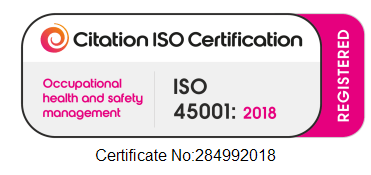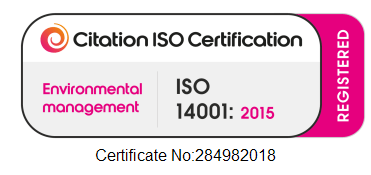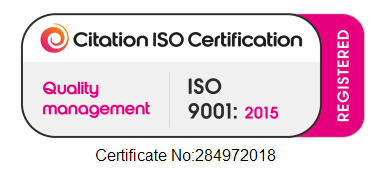
It seems everyone has been talking about either the benefits of hybrid working, or its drawbacks, since COVID-19.
At short notice, many employers have had to adapt to new expectations around the way we work.
Not long removed from the pandemic, it’s a good time to evaluate the potential benefits of hybrid working.
So, is the hybrid working model here to stay long-term? One thing’s for sure, it’s not a flash in the pan.
Since the COVID-19 pandemic, it remains a growing trend according to Gartner, with 39% of knowledge workers worldwide set to be hybrid team members by the end of 2023, a year-on-year increase.
But while some are embracing this new work style, others are less supportive.
In this guide, we’ll explore the benefits of hybrid working – as well as its downsides. Plus, what are its long-term implications?
What are the knock-on effects it will continue to have on workplace decision-makers, such as office managers and HR teams? After all, hybrid working has an impact on almost everything – from overall talent recruitment strategies to daily office cleaning.
What is hybrid working?
Gartner defines hybrid working as when employees spend at least one day a week in the office, or workplace. The rest of the time, employees can work remotely.
It’s worth noting therefore that technically, hybrid workers are not the same as remote workers. A fully remote worker is someone who doesn’t come to the office once a week, or at all in fact.
And it’s also important to bear in mind that working remotely doesn’t always mean working from home. Remote working can be anywhere that’s not the company’s premises – that could be in the client’s office instead, or in a coffee shop, for example.
The opposite of a remote worker is a traditional office on-site worker. They don’t tend to work remotely at all.
When did hybrid working become popular?
While hybrid working did exist pre-pandemic, it only became a hot topic in 2021. That year, after the majority of office staff had to work from home during most of 2020 under lockdown rules, the UK government started lifting restrictions.
And in July 2021, it removed most legal limits on social contact. This made in-person office team collaboration feasible once again.
However, wisely, the year remained one of caution for most employers. Many continued to put several safeguards in place, including:
- Regular cleaning: This included COVID-19 fogging and misting for anti-bacterial disinfection and sanitisation – ensuring a safe workplace for staff and any visitors.
- Staff health checks: These included temperature checks, lateral flow tests, and/or vaccination requirements.
- Reduced daily office capacity: For example, implementing a policy whereby only a few teams can use the office at any one time.
The latter approach brought hybrid working to the general working population. For example, some offices divided their staff into two hybrid teams or groups.
Whereas Group 1 could come to the office for the first part of the week, Group 2 would have priority over the second part. And when a group of staff wasn’t in the office, they worked remotely.
Alternatively, some businesses told staff they are able to work anywhere and could choose to visit the office whenever they wanted, if at all.
Having worked solely from home the previous year, at many companies, now employees were learning all about the benefits of hybrid working en masse – and also discovering which aspects they didn’t like. For some, hot desking advantages and disadvantages were on show for the first time too due to a new clear desk policy in their workplace.
Hybrid working advantages
The benefits of hybrid working include:
- Lower office facility costs: When there’s no need to have enough desks for the entire workforce, businesses can save money on overheads. Since adopting hybrid or more flexible working many have downsized their office size, or portfolio, to reduce their rent. If you’re thinking of downsizing, here’s a handy moving office checklist.
- Increased productivity potential: Offices can be full of distractions. Some staff are happy to interrupt others while they work, often to discuss something that’s not urgent. And some offices are noisy, either because they have music playing all day, or because lots of different people are having separate conversations. But hybrid employees have scope to separate their working week into concentration tasks (better at home) and collaboration tasks (better in the office).
- Greater employee flexibility: Hybrid working gives staff more autonomy over their working day. For example, those with children have more choice over when they can work at home with them, or pick them up from school. It’s also easier to fit in things like doctors appointments, or home repair works, when staff can choose a flexible work-from-home (WFH) day.
- Less commuting time: When there’s lots of work to do, commuting can use up precious time. Sometimes it’s possible to get work done during the commute, but not always – e.g. when driving, or if the train is overcrowded, or the WiFi fails. Having the option to work from home now and again takes some of the frustration out of the daily commute for hybrid workers.
- Lower costs for staff: Less commuting can also be much less expensive for staff – season tickets are rarely cheap. And office workers are more likely to buy their lunch on the day, but when working from home, they can save money by making meals from scratch if they prefer.
In short, benefits of a hybrid workplace model tend to arise from having fewer staff in the office at any one time. That can make working life easier for everyone in your workplace, from the office manager to the cleaners and beyond.
Disadvantages of hybrid working
However, beyond the benefits of hybrid work, there are several potential downsides. These include:
- Less manager oversight: Several studies – like this one from the University of Birmingham – suggest staff can be just as productive when working remotely. But some managers still prefer to have a clearer view of when their team is active and what they’re working on. Also, it can be harder for team members to seek support from their manager when they’re not together in-person. Therefore, onboarding, upskilling and performance management systems can be more challenging under hybrid working arrangements.
- Higher burnout risk potential: Rather than initial fears that staff might not be as productive at home, there is evidence that some employees work longer hours. Many replace their commute with extra work, for example. Also, working as well as relaxing at home creates less separation between the two, increasing the temptation to keep checking emails after the standard ‘office’ hours are over. It’s not necessarily guaranteed that all staff will enjoy a better work-life balance or see any mental health benefits under a hybrid work model.
- Increased screen time: The amount of time employees spend staring at a screen while away from the office environment can also contribute to burnout. When they’re not able to collaborate face to face, more meetings take place virtually – for sessions lasting several hours such as workshops, this can be very tiring.
- More difficult for team building: In an office, team members often sit together. But at home, they might only talk to each other occasionally through software such as Microsoft Teams, Slack, Google Chat or email. When staff spend less time together, it can be harder for managers to foster a team spirit.
- Less exposure to company culture: Similarly, it can be more challenging for office managers to promote the company culture when staff aren’t all in the office together. This can make it harder to maintain relationships or run health and wellbeing activities. For example, there’s more risk of lower attendance at in-person, post-work events due to geographical boundaries.
In other words, while there are several benefits of hybrid working, left unchecked, these arrangements can also create issues. While none of these problems are insurmountable, they are still risks requiring careful planning to mitigate.
Final thoughts: Hybrid working implications
Moreover, the impact of hybrid models extends beyond the satisfaction, or dissatisfaction, of staff. Other considerations include:
- Different office space planning needs: Hybrid working means you no longer need a desk for each member of staff. Instead, the office has a bigger part to play as a space for meetings and collaboration. Companies may need more meeting rooms and breakout areas for their employees, or bookable private booths when they need quieter working conditions. We’ve recently written a guide around how to optimise your office space planning.
- Access to broader talent pools: On the one hand, removing the requirement to go to an office every weekday means your business has fewer geographical restrictions for recruitment. No longer does living in close proximity to the workplace matter, so the top talent may consider roles in locations that were impractical previously. On the other hand, there is a greater chance of higher employee turnover due to more opportunities opening up for your own workforce.
- Easier to keep the workplace clean: You might feel that having fewer staff in the office at any one time reduces the need for cleaning. But actually, there are many benefits to a clean office space for the staff who are using it. And with fewer people leaving behind less clutter, a hybrid working policy can help cleaners access any hard-to-reach spots.
We hope you’ve found this deep-dive into the benefits of the hybrid model and its drawbacks useful.
Whether your business or remote employees embrace the benefits of hybrid working or not, professional cleaning is a great way to keep staff happy and healthy, while also impressing any visiting clients. And if they’re coming round, make sure you get the communal areas cleaned too.
We provide services for office cleaning in London and retail cleaning in London too. To find out how we adapt our 24/7 commercial cleaning services to your working arrangements, please contact us.
share this article









